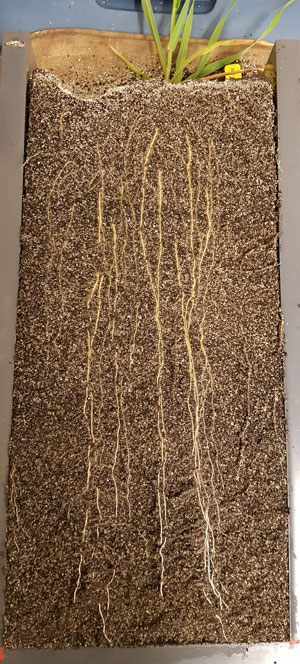Cardon Team to Explore "Sticky Roots" and Fate of Soil Carbon in Natural Ecosystems

 Grass roots growing in soil, ready for imaging. Credit: Zoe Cardon
Grass roots growing in soil, ready for imaging. Credit: Zoe CardonHuman activities are driving increasing concentrations of CO2 in the atmosphere, and the resulting climate change is becoming more and more obvious. But there are natural mechanisms operating in ecosystems that can transform atmospheric CO2 into organic forms and store it in soil over the long-term.
In particular, organic matter can become bound to soil minerals, where it can remain protected for millennia. Such long-term protection has great value to humans as climate change looms. However, the growth of living plants and soil microbes may depend on accessing nutrients trapped in the mineral-associated organic matter.
Zoe Cardon, senior scientist in the MBL Ecosystems Center, has received a grant from the Department of Energy to examine the mechanisms by which plant roots and their associated microbes can dislodge organic matter from soil minerals, making nutrients available for recycling and supporting new growth, but also making carbon vulnerable to re-release to the atmosphere as CO2.
A novel twist of the planned work lies in the above-ground treatment through which the researchers will test below-ground ecosystem function: controlled viral infection of plants. Viral infection strongly affects the types and amounts of compounds released by plant roots, and Cardon and colleagues hypothesize that some of those compounds can dislodge stored organic matter from minerals.
Since viral infection of plants is widespread in terrestrial ecosystems (with 25-70 percent of plants commonly infected), this new work promises to build knowledge about a prevalent, natural phenomenon with large potential to affect the productivity of ecosystems and the fate of large reserves of carbon stored in soil.
Principal Investigator Cardon's co-investigators on the grant include Marco Keiluweit of University of Massachusetts-Amherst, Carolyn Malmstrom of Michigan State University, and William J. Riley of Lawrence Berkeley National Laboratory.